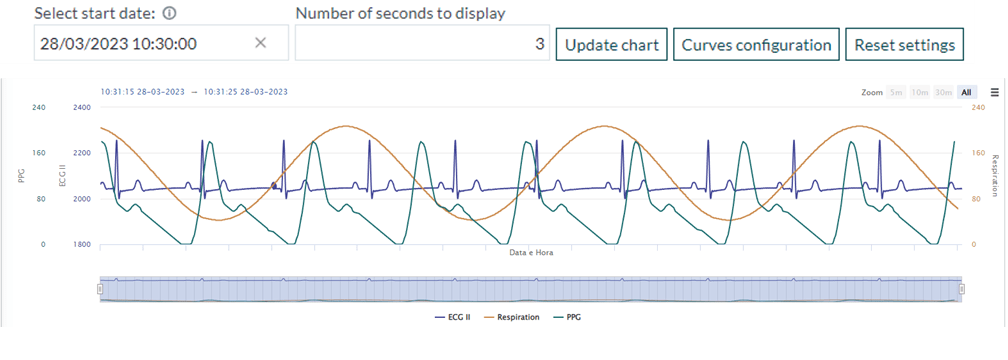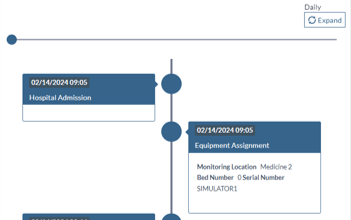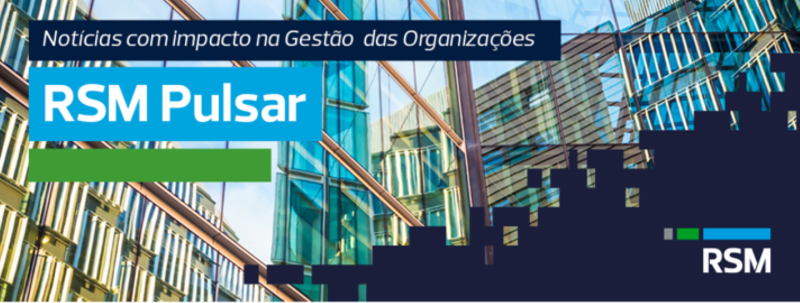DO YOU WANT TO BOOST YOUR BUSINESS?
Why not invest in unique and ever evolving solutions that can create true innovation and value added in your business, instead of continuing to invest in "straightjacket" solutions?
Do you want to explore new digital opportunities by quickly creating new digital businesses, or simply responding to new legislative or regulatory demands?
There are application solutions to organize the company and its operations. These are fundamental applications in your digital architecture.
But what if you want to explore new digital opportunities by quickly creating new digital businesses, or simply responding to new legislative or regulatory demands?
Does your current application system allow you to adequately respond to these new needs and opportunities?
It is to meet these increasingly urgent needs for taking advantage of and developing new business opportunities that our Digital Factory exists. To make your Q: Solutions.
In addition to immediately making available a set of pre-built Q: Solutions, which are just waiting for your company's specific requirements to be finalized (they are semi-finished), we also have the ability to build new applications from "scratch" in short times, maximizing your company's ability to capitalize on the opportunity.
Using business process modeling and artificial intelligence, together with agile methods and automatic code generation, we are able to enhance pre-built solutions or create new applications for you in record time.
Our Q: Solutions are made using an agile, low-code approach that applies not only to the creation of new applications, but also to the creation of completely new digital business.
Pre-Built Q: Solutions
WHY Q: AML?
The purpose of the AML rules is to help detect and report suspicious activity including the predicate offenses to money laundering and terrorist financing, such as securities fraud and market manipulation.
Key components of AML include Customer Due Diligence (CDD), Know Your Customer (KYC), transaction monitoring, suspicious activity reporting, and record-keeping requirements.
Q: AML application solution was developed to help financial institutions (FIs) and other regulated organizations stay compliant with regulations and monitor, detect and report money laundering, terrorist financing, and other financial crimes.
Q: AML has various functionalities, such as Customer Identification, Transaction Monitoring, Audits and Reports, Alerts and Notifications, etc.
Customer Identification
- Ensures that all mandatory customer information and documents are present
- Periodic customer verification
- Automatic messages to the customer when information needs to be updated or is about to expire
- Alerts for documents close to expiration date
Transaction Monitoring
- Real-time and post-mortem monitoring
- It uses traditional rule-based search and machine learning pattern identification to reduce false positives
- Searches based on configurable rules by population type and client risk
- Simulates the result of changing configured parameters to fine-tune alert generation
Audits and Reports
- Statistical reports with multiple levels of aggregation and different perspectives
- Official reports to meet regulatory requirements
- Performance indicators
- Audit reports obtained by sampling in order to verify compliance with established procedures
- Repository of procedures and risk factors
Alerts and Notifications
- Alerts prioritized by advanced machine learning algorithms to improve employee efficiency
- Alerts aggregated by common characteristics enable more efficient decisions
- Alerts assigned to specific people according to configurable workflows
- Configure deadlines by workflow stage and control the costs and efficiency of alert analysis
Competitive Advantages
- Intuitive user interface
- Access management and delegation of responsibilities allow workload sharing
- Prevents potential conflicts of interest by not assigning alerts to employees when they may be related to the client or accounts under review
- Flexible integration with Core Banking and other peripheral systems
ASK US for more information!
WHY Q: WHISTLE?
In Portugal, Law No. 93/2021 came into force on June 18, 2022, 180 days after its publication, meaning that from this date onwards the implementation of internal reporting channels that can effectively protect persons who report breaches of Union law (Directive (EU) 2019/1937 of the European Parliament and of the Council of 23 October 2019), is mandatory.
The matters covered by the European directive focus on criminal offences such as the misuse of financial resources, theft, breach of any duty of confidentiality, fraud, embezzlement, bribery, including serious or repeated violations.
Fines are expected to be imposed in the event of non-compliance with the law, which may amount to €250,000.
Who must comply with the new Law No. 93/2021?
- Organizations operating in an EU Member State
- Organizations with more than 50 employees
- Municipalities with + 10 thousand inhabitants
Requirements/Legal Compliance
- Ensure the safe submission and follow-up of complaints in order to guarantee the completeness, integrity and preservation of the complaint
- Ensure the confidentiality of the identity or anonymity of whistleblowers and the confidentiality of the identity of third parties mentioned in the complaint
- Prevent access by unauthorized persons
Response Procedures/Deadlines
- The obliged entities must, within seven days of receiving the report, notify the whistleblower of the receipt and the requirements for submitting the report through external channels managed by the competent authorities
- Within a maximum period of three months, communicate the measures planned or adopted to follow up on the complaint
- Upon request from the whistleblower, the obliged entities must also communicate the result of the analysis carried out on the complaint within fifteen days after its conclusion
Q: WHISTLE 
Whistleblowers must be confident that they will remain anonymous so that they feel comfortable reporting their concerns.
Q: WHISTLE allows an integrated reporting from the initial to the final phase of any whistleblower process. Allows the sending of responses, meet deadlines, customize reporting categories, assign the case to the most appropriate person in charge, manage access, etc.
Q: WHISTLE is a complete complaints reporting system with an integrated workflow to accelerate and assure that everything is in accordance with the law.
Competitive Advantages
- Ensures the safe presentation and monitoring of reports, in order to guarantee the completeness, integrity and conservation of the report
- Ensures the confidentiality of the identity or anonymity of the complainants and the confidentiality of the identity of third parties mentioned in the complaint
- Prevents access by unauthorized persons
ASK US for more information!
WHY Q: AUDIT?
"Internal auditing is an independent, objective assurance and advisory service designed to add value and improve an organization’s operations. It helps an organization accomplish its objectives by bringing a systematic, disciplined approach to evaluate and improve the effectiveness of governance, risk management, and control processes. ..."
"... Evaluating emerging technologies. Analyzing opportunities. Examining global issues. Assessing risks, controls, ethics, quality, economy, and efficiency. Assuring that controls in place are adequate to mitigate the risks. Communicating information and conclusions with clarity and accuracy. ..." Institute of Internal Auditors (IIA).
Internal auditors play the critical role of being the third line of defense.
Q: Audit is n Audit Management Solution that helps manage the complexity of the auditor's role.
The most demanding companies certify their processes according to several normative references (e.g. ISO, NIST, CMMI, PCI Council , COBIT, Regulation, Legislation). Many of the requirements of each of the references overlap and can be satisfied together. Additional requirements may be added to existing procedures.
The Q: AUDIT repository is specific to each organization, mapping its internal procedures against all the benchmarks the organization must comply.
The Q: AUDIT platform can be shared by multiple users, decentralizing tasks and ensuring the involvement of all stakeholders. Allowing automatic generation of audit test checklists and propagation of findings in a matrix format, greatly reduces audit time and associated costs.
Q: AUDIT enhances the process of continuous improvement of procedures, increasing their efficiency/effectiveness, thanks to its controlling capacity of activities, risks, impacts and implications.
Q: AUDIT main functionalities
Planning
Planning of audits to be carried out, including: organization's audit catalogue, annual audit programm, distribution of audits among those responsible.
Execution
More efficient execution of audits, using multiple frameworks:
- Follow-up of findings identified in previous audits
- Tests based on user-defined notebooks
- Assessment of multiple requirements simultaneously
- Association of non-compliance requirements with previously identified findings
References / Multi-Framework
Allows the definition as many audit references (normative, regulatory, internal) as desired by the organization, as well as the requirements associated with each one
Notifications
The user receives notifications for various pending tasks, for example:
- Requests for evidence
- Evidence presented to verify
- Audits in the final stages, awaiting feedback from the auditee(s)
- Findings to reach the deadline set for closure
- Findings that exceeded the resolution deadline
Management indicators
The input dashboard allows you to quickly and effectively monitor some indicators:
- Audits by type
- Findings by reference and requirements
Reports
The following reports are available in the base version, with direct export to MS Word or PDF format:
- Audit plans
- Audit program execution control reports
- Audit reports
- Automatic report generation
- Final audit reports according to the type of audit
Closing + Follow up
- Consolidation of identified findings
- Recording of findings arising from internal or external audits
- Resolution and follow-up of identified audit findings
- Alerts when critical dates approach
- Processing and monitoring findings through the recording and implementation of corrective/preventive action plans and effectiveness assessments
Access profiles
- Control over access to information is ensured through confidentiality levels and access profiles.
Audits are catalysts for transformation and innovation. Decisions should be made based on quantitative factors. If you don't measure it, it won't work.
ASK US for more information!
WHY Q: TERI?
Q: TERI arises from the lack of an integrated, real-time system for monitoring and sharing patient health data, regarding patients under observation in the emergency room, patients identified as being in the process of decompensation, patients in transport in and out of the hospital and patients in home hospitalization.
Specifically:
- Inefficient monitoring of patient conditions: Healthcare professionals need to physically visit the patient multiple times to assess their condition, leading to delayed interventions
- Absence of centralized patient information: Patient data is not centralized or readily accessible, hindering timely access to medical history and data collected during previous assessments
- Manual MEWS calculation: MEWS (Modified Early Warning Score), which is critical for assessing patient deterioration, is calculated manually, increasing the risk of human error and delayed responses
- Delayed detection of worsening conditions: The lack of early warning systems or real-time monitoring leads to delays in detecting critical changes in the patient’s condition
- Data sharing gap during ambulance transport: There is no effective system to share patient data between ambulance services and hospitals during transportation, limiting the hospital's preparedness for emergency care.
WHAT IS Q: TERI?
Q: TERI is a software with two components: A telemonitoring management portal and a single page application where real-time graphs of monitored patients are presented.

It is used in conjunction with multi-parameter monitors that send messages via the HL7 protocol. The patients in continuous monitoring will be under local and remote surveillance. Remote surveillance will be carried out in a central unit. The center operates 24 hours a day, 7 days a week. The system allows the visualization and the management of information of a large number of monitored patients and its evolution over time.
The system is made of three modules:
- The Request module is where requests for new telemonitoring are made, patients are associated with the monitoring equipment, the waiting list is managed and warning alarms are issued to the management team so that the telemonitoring processes can begin
- The Distribution module concentrates all the configuration functionalities related to the distribution of the information from each telemonitoring and the way in which it appears by default on the patient’s vital signs remote monitoring screens
- The Management module is the main module of the telemonitoring management portal. It allows the healthcare professionals to manage and monitor patients and all the alerts generated, with clinical decision support function

In summary, some of the system’s features are:
- Real-time graphics page interface similar to the monitoring equipment interface
- Visualization of curves and vital signs of multiple patients in real time and their history with the possibility of selecting specific time intervals
- Alarms relating to physiological parameters and the MEWS Score (customizable by user and by patient)
- Alarms coming from the equipment and relating to the operation of the system

- Timelines with various events in chronological order
- Audible warning when there are alarms on the real-time graphics page
- Integration with Portuguese hospital management systems
- Real-time telemetry (component for continuous monitoring of application operations)
ASK US for more information!





